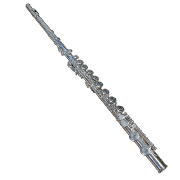If you come across this name, you might think that all the musical devices in this group are wooden. However, that is not the case anymore as they could be of other materials including plastic or metal combined with wood. In the past, all the instruments in the family were of wood and that is what gave rise to the name.
Though the combination of materials may have changed over time to give way to more variations in devices, the workings remain the same. You will find that they all comprise cylinders with openings on both ends. One end act as the mouthpiece while the other is where the sound comes out. To create sounds using devices from this group, you would need to blow air into the mouthpiece, and this breathing is what gives rise to the ‘wind’ in the name. As you do so, you should alter the openings as this will help you adjust the pitch to that which you desire. You will find that there are metal caps on the holes to help you do this and people refer to them as keys.
There are other variations in these devices which in turn affect how high or low the sounds produced will be. Take the clarinet as an example. Here, you will find that there is a slight piece of wood in the mouthpiece. Once you blow into the instrument, the wooden piece vibrates, and this thus affects the quality of the tone. For some devices such as the oboe, you will find that there are two of these pieces to regulate the sound better. The tones produced not only depend on the design of the mouthpiece, but they also depend on the size of the instrument. Where the device in question is small, the sound produced will be high-pitched, and the vice versa will hold.
Check out the primary devices in this category and their features:
The Flute

This device has been in use for quite a long time, during which period, a lot of changes have taken place as to its design. In the past, people created flutes from stones, reeds, wood and other materials which were readily available in their localities. At present, you will find that the ones in use are of platinum, gold, silver, and other metals.
Typically, this device will measure about two feet and is thus quite easy to handle. You hold it horizontally with both hands before directing air into the mouthpiece. You then work your fingers above the keys to alter the pitch as desired. You can find about two of these devices in a line-up, and they mainly feature in the euphony. If you wish to play the flute, you will be happy to know that it is quite easy to master the skill.
Then there is the piccolo which measures about one foot. If you wish to play very high notes, this is your best bet, and it features in music where the same is essential.
The Oboe
The oboe is a captivating musical device. It measures two feet and has two wooden pieces that vibrate once you blow into the mouthpiece. To use it, you need to blow into the mouthpiece while holding the device in a vertical position. As you do so, you should push down the keys to adjust the notes. People love the oboe as it can play a range of sounds and owing to this, you will find about two of these devices in an ensemble.
Have you heard of the English horn? The name may have you thinking that it is a horn with an origin in England, but this is not the case. It is a musical device with a close relation to the oboe, only that it is much broader and longer than it. It produces warm notes and where this is necessary; you will find someone in the ensemble handling this device.
The Clarinet
The clarinet has a close resemblance to the oboe. The difference between the two is that this device relies on a single vibrating wooden piece. However, you can handle it the same way you would an oboe.
The Bassoon
This device features many keys and is quite impressive owing to its doubled-in-half appearance. It also comprises two wooden vibrating pieces and is excellent at playing low harmonies. You play it like an oboe.
These four instruments are the four main devices in this family. Which one would you like to learn?



